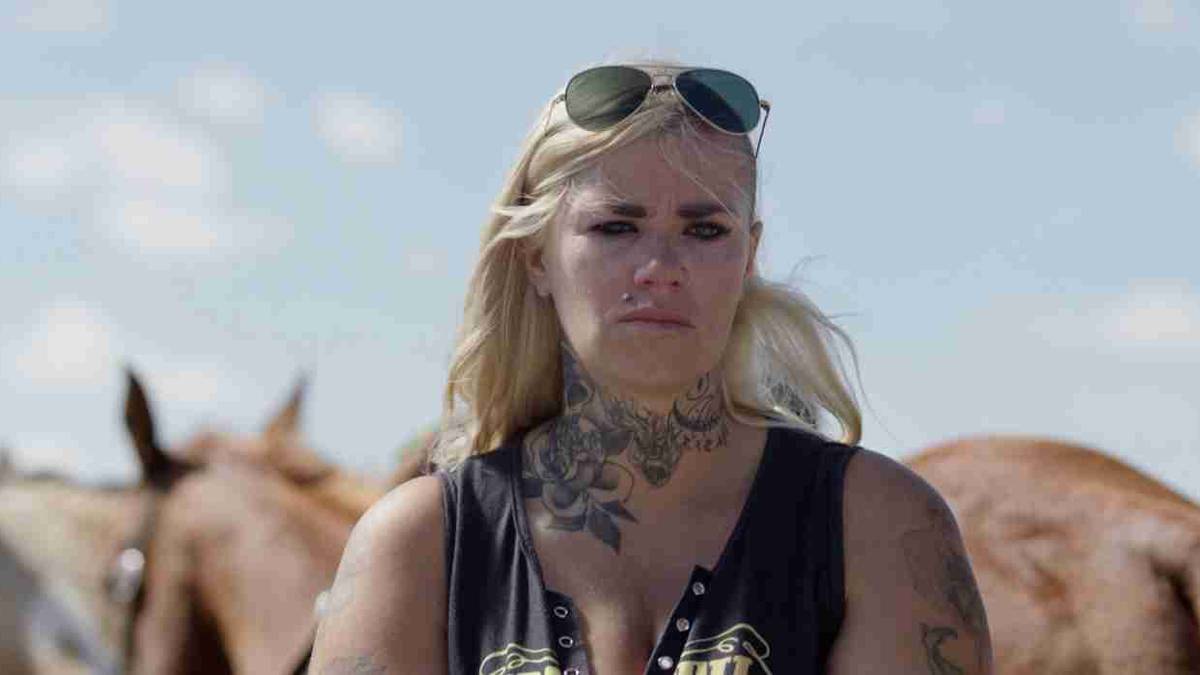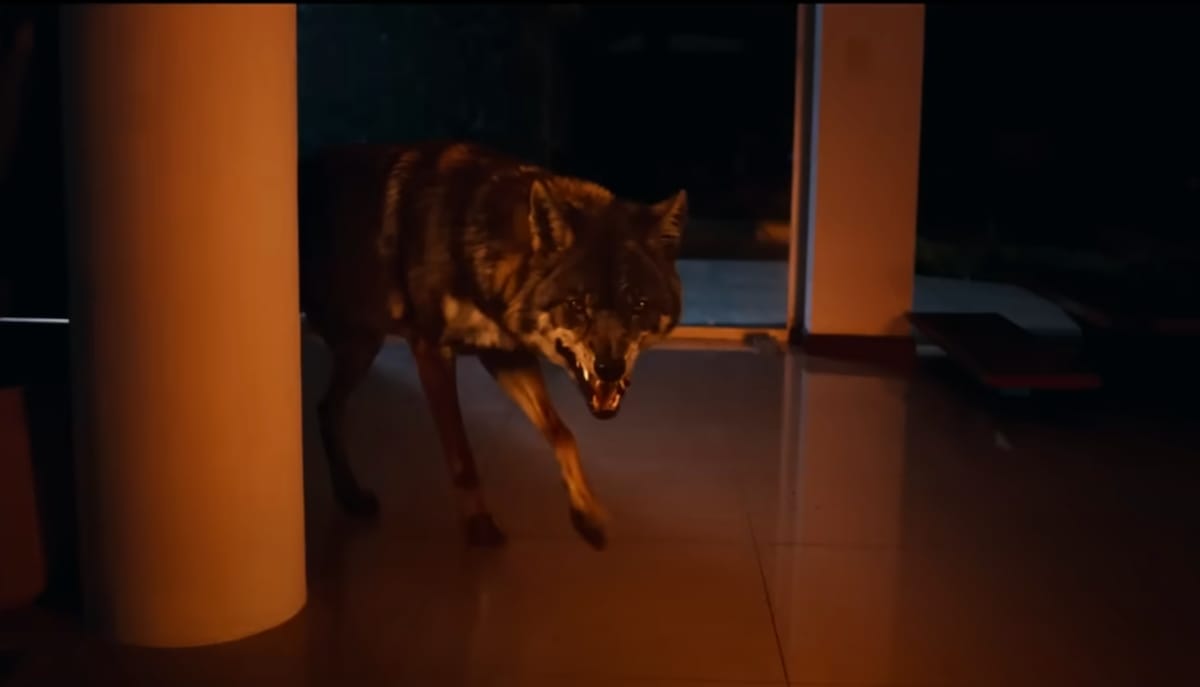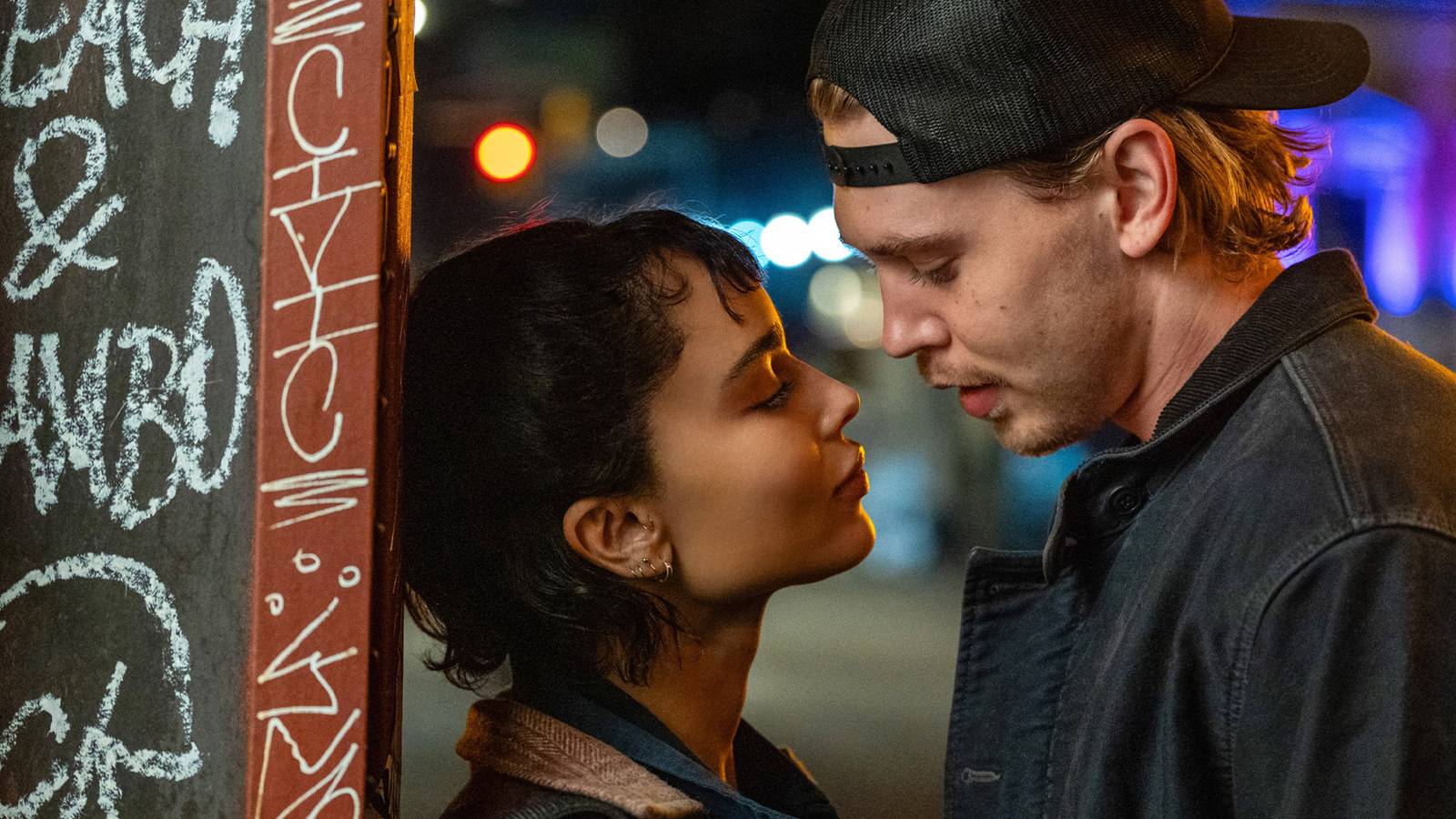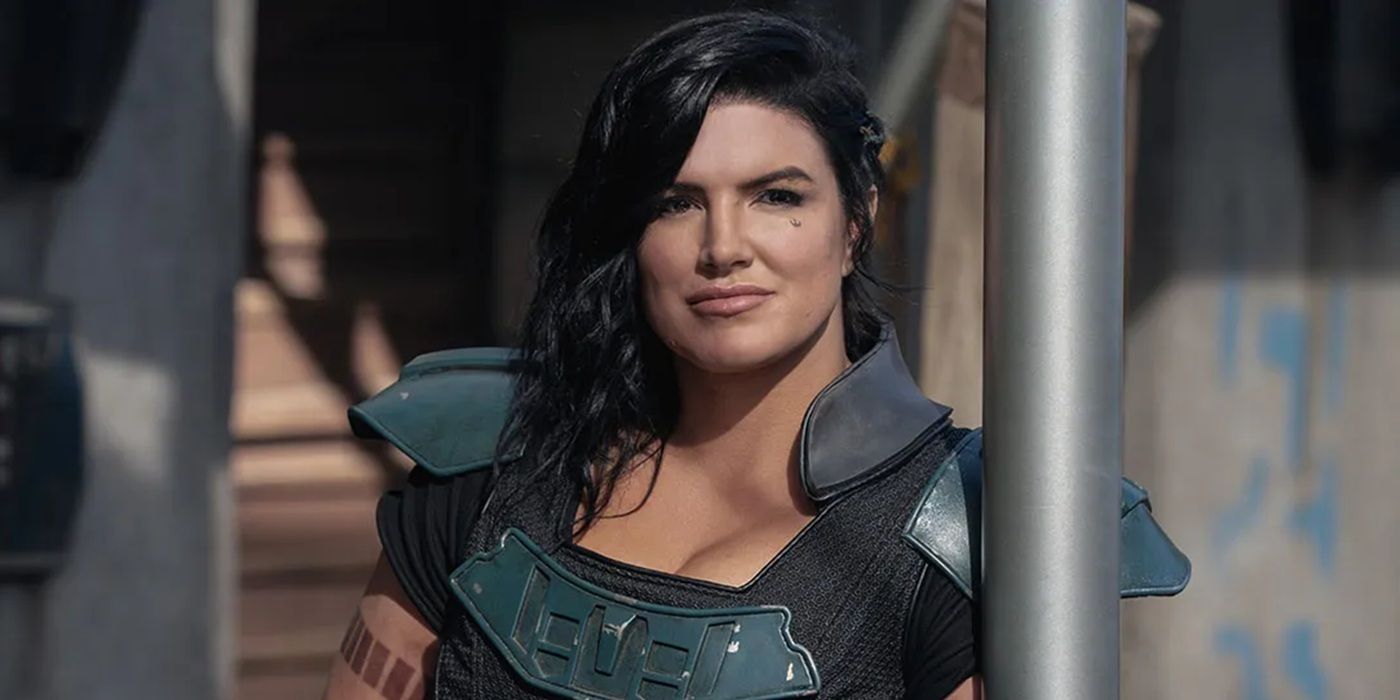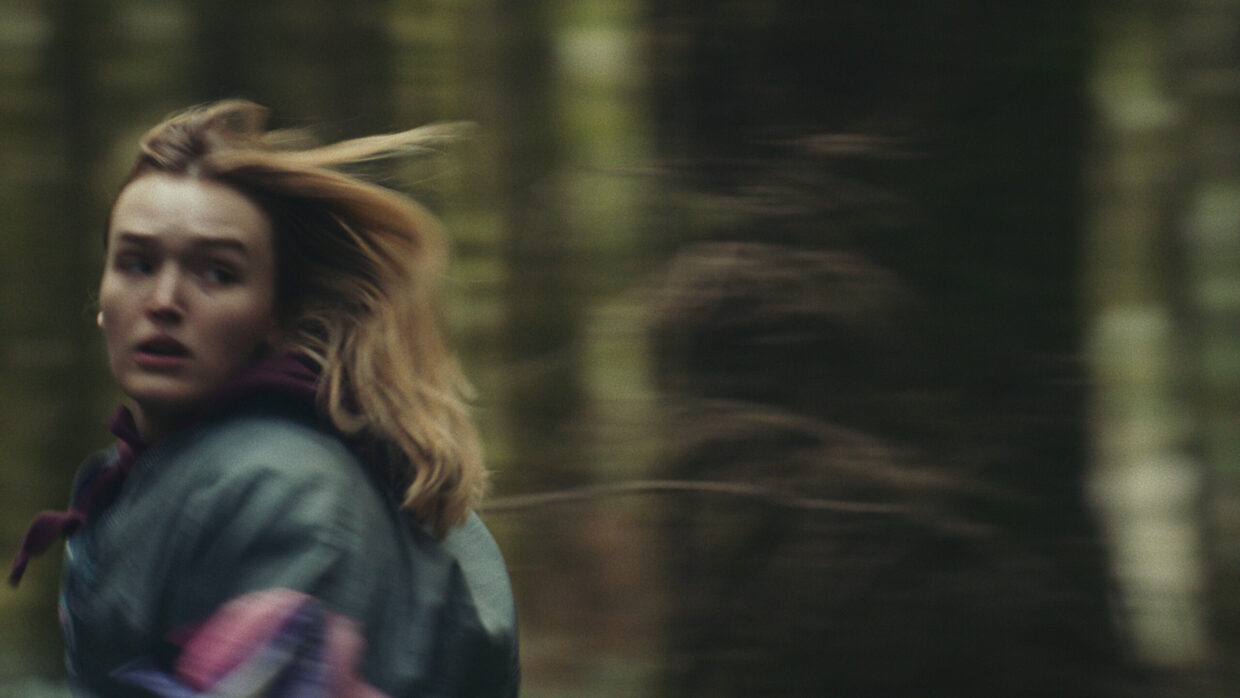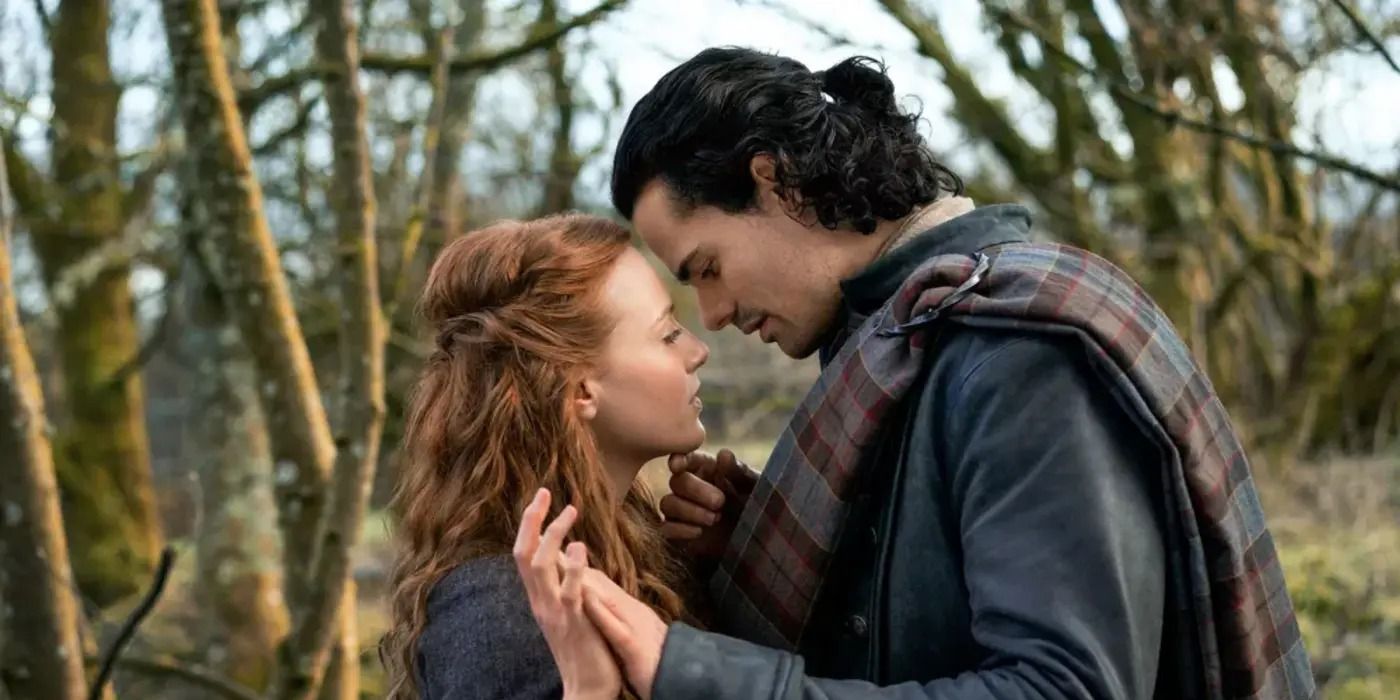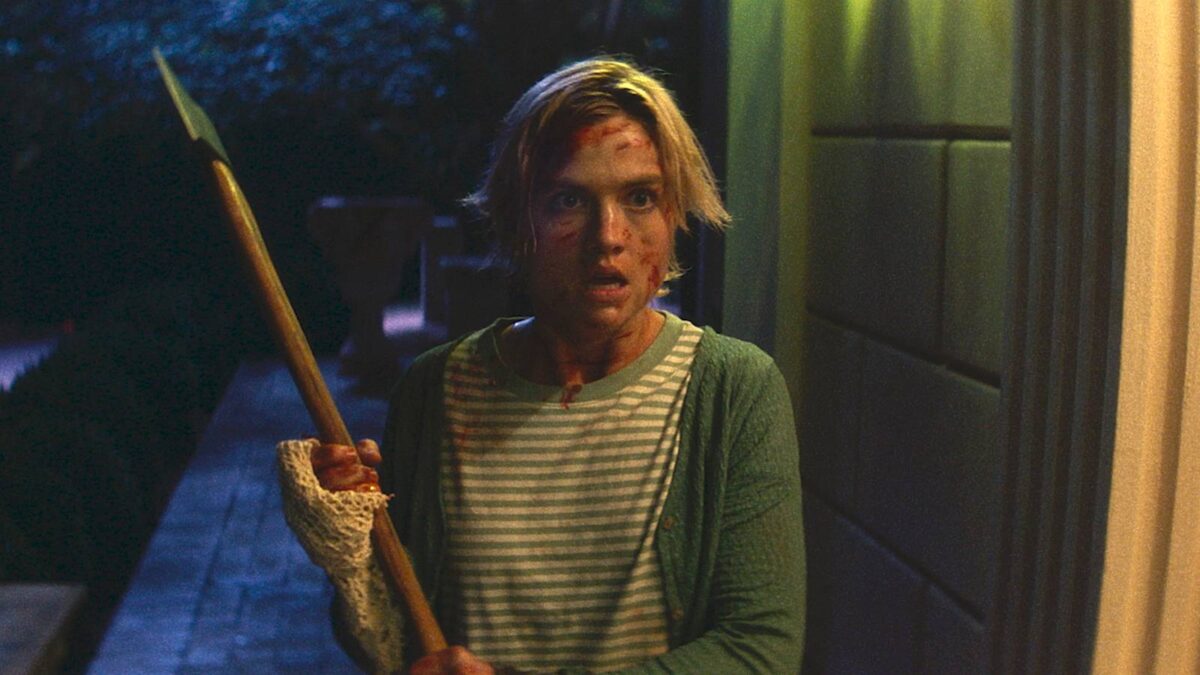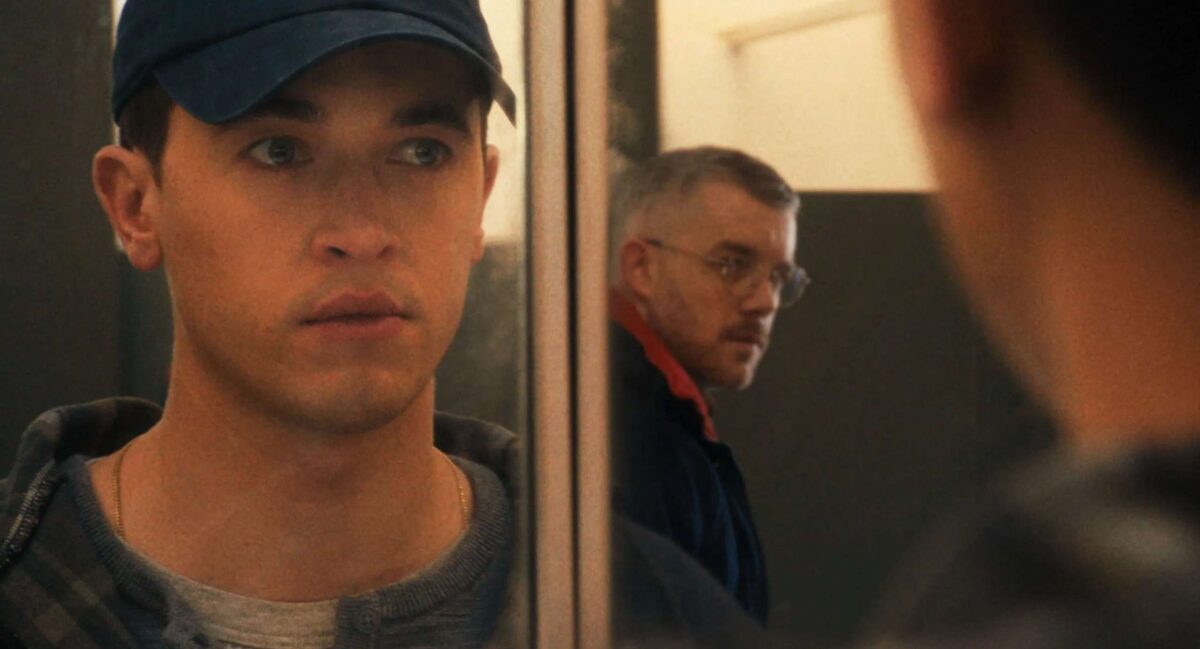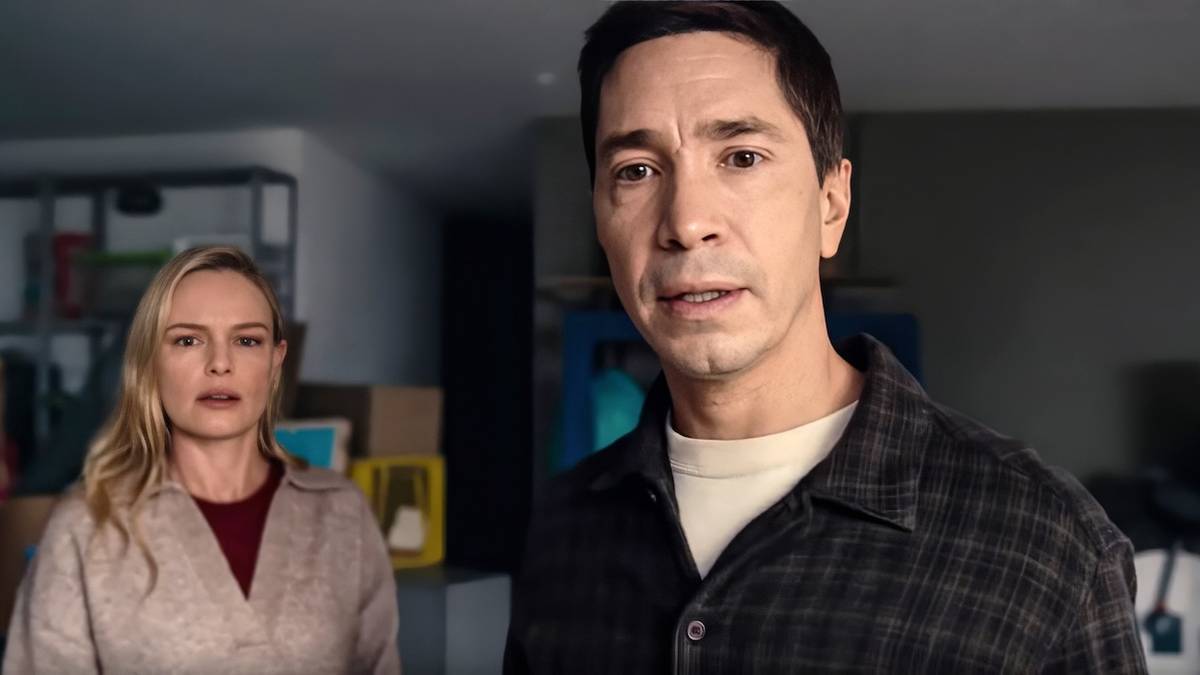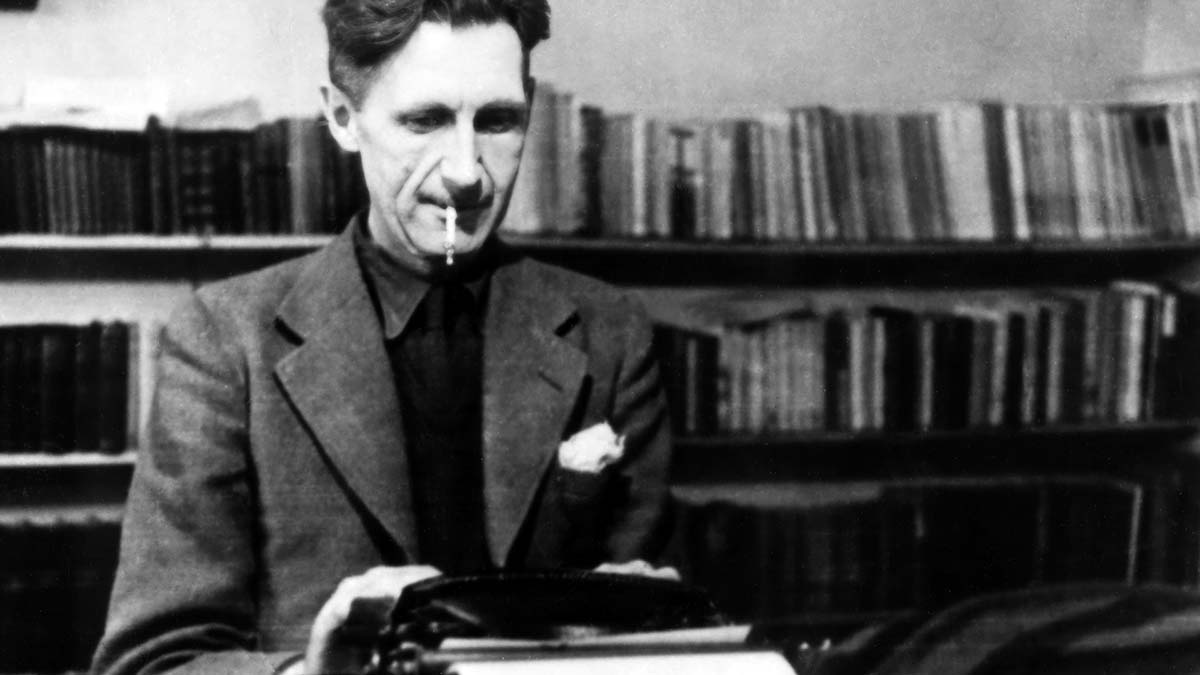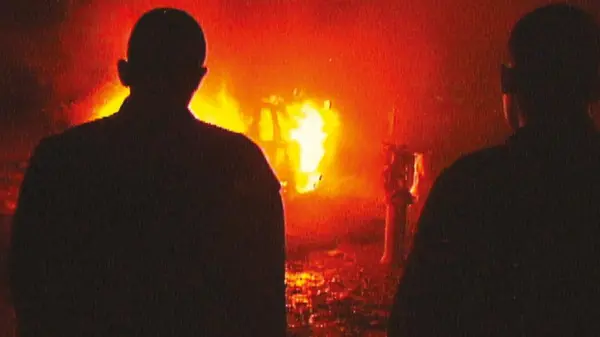
Stillz on his Edglrd-produced feature debut, “Barrio Triste”Filmmaker Magazine
Sep 16, 2025
Barrio Triste
Barrio Triste premiered at the Venice Film Festival weighted with at least a couple of expectations. It’s the debut feature for Stillz, known till now for directing music videos for Bad Bunny (who years ago took him on quite early in his career) and other artists. It’s also the latest feature produced by Edglrd, Harmony Korine’s creative conglomerate, following the frontal audiovisual assaults of Aggro Drift and Baby Invasion, both directed by Korine and themselves highly anticipated for how they would re-scramble cinema.
In actuality, Barrio Triste (as might be expected from watching Stillz’s moodily evocative videos) evolves its own identity after initially starting with the skater-adjacent antics of a crew of kids in Medellin who steal a video camera and film their smash-and-grab raid of a jewelry story. That much might have been expected, but Stillz proceeds to modulate the aggression into something mysterious and melancholic, with long, winding walks through a barrio into the night. Punctuating the film are nearly emo interviews with members of the young gang, who answer (and tear up at) wide-ranging questions that escape the bounds of the tightly framed, vaguely institutional backdrop.
Stillz shot on a Betacam, operating the camera himself in a poorer neighborhood in Medellín, where his casting team found his actors and secured the cooperation of local mafia leaders. The resulting imagery has something of the eerie, liquid feel of early video experiments like Stranded in Canton or The Police Tapes, but in a setting and a range of moods and realism that harkens back to Los Olvidados (with long-walk street sequences that reminded me of Bi Gan). Barrio Triste has a climactic night sequences (involving a Post Tenebras Lux-esque creature) that do recall other Edglord output, but my hunch that there was something else going on was borne out when Stillz shared the sequence’s personal resonance.
I spoke with Stillz about making Barrio Triste, the day after its world premiere in the second week of the Venice Film Festival.
Filmmaker: How did the project come about?
Stillz: My past is in music videos, and at least for the last couple of five years I’ve been doing stuff for Bad Bunny and all these other people. One day I was lying down on my couch in L.A. and I got a phone call from a random 305 number, a Facetime, and I opened it up and it was Harmony Korine shirtless with a cigar in his mouth. And he was just basically like, “Hey, I heard you were trying to develop your first film. When can we talk, how soon can you come to Miami?” And I said, “Oh, well, I’ll go to the airport right now.” That’s basically when the conversation started. I always wanted to keep learning and educating myself in visual art and everything, and making films was the next step. I was really grateful for Harmony—he gave me a lot of freedom, and he guided me in his own special ways.
Filmmaker: What story were you looking to tell with this movie that you felt you hadn’t you hadn’t told yet with in one of your other works?
Stillz: Basically what I felt with the music videos was at a certain point it kind of became something commercial. I was always working for someone else and telling someone else’s story. I’ve always kind of hidden my private life and my family and everything from the world for so long. I mean, in the movie world, it’s kind of something new, but in the music world, people know me as someone that’s just been hiding all these years, but while making these big works. And on a trip to Colombia once I was doing this charity organization with a few people in my family, and we went to this place called Barrio Triste, which is in the center of Medellin. It’s a drug-ridden neighborhood that feels like a zombie land. There’s people with broken homes, prostitutes with their children, everything, and the charity organization goes there and gives them an opportunity to have people talk to them and listen to their stories and we feed them.
There was one part there where they wouldn’t allow anyone to take photos because it’s all controlled by the mafia there, the drug mafia. And I just pulled my camera out and started taking photos and talking to people. I met people from around the world there. It was really special. I even met someone from L.A. that because of heroin addiction and things like that ended up in in Medellin somehow. I was so surprised. And I took this one photo of one kid that was lying down sad, and that’s what inspired me wanting to do a film in in Colombia. And that’s why I called it Barrio Triste.
Filmmaker: Did you end up shooting near there?
Stillz: We shot we shot very close to there, not in the actual neighborhood, but in this neighborhood called Barrio Paraíso up the mountain. Obviously we had to work with a lot of the different mafias that control all of those neighborhoods and they were open for us to include the community and make it something that everyone could be a part of. We didn’t have professional actors. I wanted everything to feel very real, almost like some children just took a camera and documented a few hours of their life.
Filmmaker: Like in the movie.
Stillz: Like in the movie, exactly.
Filmmaker: How did you find people for casting?
Stillz: The casting was honestly one of the most amazing parts. It was about two or three months of working with this casting team that I think worked with or learned from the team from City of God in Brazil. And they took around three or four months going to skate parks and neighborhoods where kids hang out in Medellin. And a lot of things I related to in my childhood. I grew up filming skateboarding and just being around all the time. So I wanted that energy, that youthful energy you have when you’re a child and your parents aren’t around.
Filmmaker: I love those long walks when they’re just kind of wandering around the neighborhood—those are long takes, right?
Stillz: Yeah, long takes. I didn’t write the script in like a very traditional form. It was really a lot of notes and an outline that I created that we made a script to it. What I wanted to do is, since we didn’t have many days to shoot, we created different worlds in each place with different setups, and all the different people had a role in each part of the road or the section of where we were in. I would create the world and try to improvise and find the rhythm of what it feels like to just walk through a neighborhood, to see what people feel and how people live in these areas.
Filmmaker: Talking with people there, what did they say about how they wanted to be shown on screen? I’m sure it’s not often that people are coming with cameras.
Stillz: No one comes with cameras ever. I mean, the police is not even allowed in that neighborhood. It’s a very violent neighborhood, but they were actually very happy, and very helpful, having someone to be there showing how they live and being a part of something bigger. I think it was very inspiring, especially for the cast because they’ve never had jobs or anything, and they felt extremely excited to actually go to the courses and planning we did before actually doing the filming. I get messages from them all the time saying, you know, when’s the next thing, when’s the next thing. So we’re always trying to figure out how to include them in different projects that I can bring to Medellin.
Filmmaker: How did you get the trust of the local mafia?
Stillz: We had an incredible location team filming in Colombia. It’s the most professional team I’ve worked with, and I’ve worked in the U.S., in Asia, everywhere. They’re very passionate about filmmaking. The location guy was actually from a barrio, so he knows really well how to speak to them and how to include the community so that it doesn’t just feel like we’re there trying to do business with them.
Filmmaker: Could you talk about the look of the film? Maybe one way in is what camera you shot on.
Stillz: So in music videos, I’m known for shooting always on 35 millimeter film with a massive crew, huge budgets, across the world, all this stuff. And I thought for a film, it was interesting to go back to my roots of filming skateboarding and just shooting with a camera. Basically, I operated the whole film. Except for only one shot where he looks into the mirror. I acted as one of the kids in the whole film operating, and it was shot on the news reporter camera that came up at the beginning of the movie. It’s a Betacam that was used in the ’80s for news reporters.
Filmmaker: Was that hard to work with? I feel like that could be wonky.
Stillz: It was very wonky. We tried to add like follow focus and all these things. Everything was failing, so I literally did everything with my hands. Manually focusing, manually zooming, everything. But I had a nice team of technicians to set it up for me and help me.
Filmmaker: How long are those tapes?
Stillz: The tapes are around 10 to 15 minutes each time. Some are shorter, obviously, but we interviewed all of the kids, so there’s incredible footage of that. The most powerful was Juan’s story because on the last day, he found out that he had a daughter for four years that he’d never met. I remember seeing him crying and he hadn’t slept the whole night and there was something in me that that felt like the film needed. So I asked him a couple questions about what he thought about life and death and work and things like that. It really brought out the sensibility and the emotion in them, because they all acted very tough throughout the movie you know. They’re 14, 15, 16 years old but they act like they’re older. The teacher that was part of the casting team was the one asking the questions and I’m filming.
Filmmaker: How do you view those sequences? I’ve heard them described as everything from interviews in prison to interviews from an afterlife.
Stillz: It was interesting because the first time I saw the film, to me it felt like I didn’t make it. It was the first time I had ever watched something that I felt fully detached from. The first feeling I had was almost like if they got caught after doing everything and they’re being interrogated. But it’s open to whatever the people think. That’s why I didn’t really want to explain much of that.
Filmmaker: Why do you think you had the feeling that it was not something you made?
Stillz: I don’t know. I don’t know if it’s the way I watched it or the mental state I was in or something. But when I was looking at it and listening to the music and getting hypnotized by the long walks and the long moments of darkness, it felt almost like a meditation for me. I felt so detached from me holding the camera and me seeing my feet, to actually just being really interested in the lives of each one of the children and what would happen next.
Filmmaker: Earlier you mentioned that the casting team had worked on City of God, and that made me wonder, what are some movies that have been inspirations to you in showing how people live in neighborhoods like this?
Stillz: The main thing I was looking at was Rodrigo D: No Futuro, which is an old Colombian film from Victor Gaviria. That was a movie from the ’90s that I think really shaped cinema in Medellin at that time. It shows the punk scene in those times and a lot of the things in the movie—like the band and the way they dressed and stuff like that—was inspired by that. Besides that, I also was watching a lot of things on YouTube. I was obsessed with those kind of shots of just walking where you’re just hypnotized, and it’s almost meaningless with a simple view, but when you watch right or you’re in the right moment, you could start feeling a lot of things from it.
Filmmaker: I’m going to have to watch that Colombian movie.
Stillz: Yeah, you need to watch that. That’s a great film. There are also a lot of things in the film that have secret meanings about things that have happened to my family.
Filmmaker: Is there anything you can share?
Stillz: I mean, it’s mostly about the kidnapping in my family we experienced. So there’s a lot about what a kidnapping feels like and what it sounds like to someone that wasn’t there. It sounds like a monster story. So, you know, you can make the connection.
Filmmaker: That’s awful to hear. I was going to ask about this monster at the end, and now I learn how it’s actually connected to something real.
Stillz: Exactly, yeah, it’s more of a feeling to me. That’s why I chose not to speak too much about it because of how personal it is to me and also how I wanted people to take it in themselves, you know, whether they just feel scared or whether they connect to it as some kind of spiritual being or whatever it is.
Filmmaker: How did you design the creature, visually?
Stillz: It’s actually a real person. There’s not much done to him, which is the most interesting part. I had seen this photo of a guy with a deformed body in Medellin, and we spent two months looking for him. It turned out that person was dead, but he had a son. And the son was selling candy. We took two months to find him, and he was the nicest boy ever. We basically just spoke to him, and he was honored to do something like this outside of his struggle.
Filmmaker: So he’s performing the role. And is that shot at night?
Stillz: Yes, it’s shot at night. I didn’t want to show his whole figure. I wanted to leave it up to the person watching to see and to imagine and dream what was it that they were looking at.
Filmmaker: I have to ask about the score by Arca. How did that collaboration work?
Stillz: Man, that was a mission. Doing the actual score was incredible but I had to chase her around, you know? I was listening to her first album throughout the whole filming, and I was like, okay, this movie cannot come out without Arca doing the score. I didn’t have a relationship with her at the time. We just had spoken briefly, and so I went to Barcelona. She’s like, “We can do a music video, I can’t really watch the movie right now.
So I was like, “kay, I’ll do the music video for free.” And we did it. And then I was like, “Can you watch the movie now?” And she’s like, “No, I got to go to Japan.” And I was like, “Okay, well, I’m going to be that guy and get on the same flight with you to Japan. And I’m in Japan until you watch this movie.” We get there and then she’s like, “I want to shoot another video,” and I was like, “Okay, let’s do another video!”
Finally she sat down and she watched the movie. She cried for the whole movie, and I think she felt really connected to it because she’s from Venezuela, which is right next to Colombia, and we have a lot of the same struggles. We extended her trip, and we did the whole score in about seven, eight days, in a hotel room. I would lie down in a chair, and she would ask me to speak to her about my feelings and things like that, and we would watch the scenes. It was like magic.
Filmmaker: So you had the movie done when you approached her?
Stillz: The movie was done, with a temporary music. I shot it around May in 2024. And then the Japan thing was around August of 2024. It was pretty quick.
Filmmaker: What about the band that’s playing right by the street when they’re going on the walk?
Stillz: It’s a random Colombian rock punk band. They freaked out and it came out incredible. My only hope for them was that I really wanted the sound to be out of a megaphone while they were playing. It explodes in the speakers the first few times we heard it and it was mixed a little nicer.
Filmmaker: This all sounds like quite a journey. How does it feel to be finally screening the film?
Stillz: After all that, it’s surreal. I have no idea how we got here, honestly. I’ve never been a person of high expectations, and I think it really only settled in when I was doing the sound check in Venice and I started getting really nervous. I wonder what people are going to think or if they’re going to think I’m a fraud. And it’s been a great week! And I have a couple ideas for my next movie, but I don’t have anything really ready to say out loud yet until I find out which is the one I want to stick to.
Publisher: Source link
Erotic Horror Is Long On Innuendo, Short On Climax As It Fails To Deliver On A Promising Premise
Picture this: you splurge on a stunning estate on AirBnB for a romantic weekend with your long-time partner, only for another couple to show up having done the same, on a different app. With the hosts not responding to messages…
Oct 8, 2025
Desire, Duty, and Deception Collide
Carmen Emmi’s Plainclothes is an evocative, bruising romantic thriller that takes place in the shadowy underbelly of 1990s New York, where personal identity collides with institutional control. More than just a story about police work, the film is a taut…
Oct 8, 2025
Real-Life Couple Justin Long and Kate Bosworth Have Tons of Fun in a Creature Feature That Plays It Too Safe
In 2022, Justin Long and Kate Bosworth teamed up for the horror comedy House of Darkness. A year later, the actors got married and are now parents, so it's fun to see them working together again for another outing in…
Oct 6, 2025
Raoul Peck’s Everything Bagel Documentary Puts Too Much In the Author’s Mouth [TIFF]
Everyone has their own George Orwell and tends to think everyone else gets him wrong. As such, making a sprawling quasi-biographical documentary like “Orwell: 2+2=5” is a brave effort bound to exasperate people across the political spectrum. Even so, Raoul…
Oct 6, 2025

